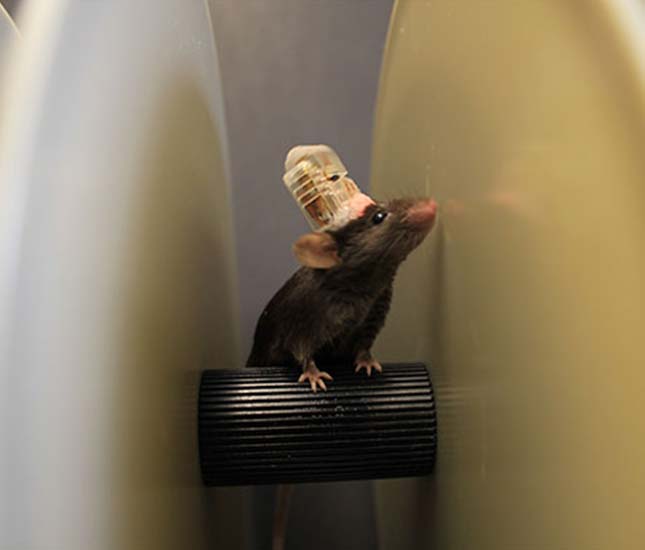
THIS ARTICLE IS MORE THAN FIVE YEARS OLD
This article is more than five years old. Autism research — and science in general — is constantly evolving, so older articles may contain information or theories that have been reevaluated since their original publication date.
A new device lets researchers wirelessly stimulate the brains of rodents as they explore their cages, and can deliver drugs at the same time. The approach, described 30 July in Cell, could identify brain circuits that underlie autism-related behaviors1.
The invention marries optogenetics, the use of light to stimulate neurons, and microfluidics, the control and manipulation of small volumes of liquid for applications such as delivering drugs. Existing devices can do only one of these things, or are not wireless. By delivering both light and drugs into the brain, the contraption gives researchers precise control over when neurons fire.
The new device includes a small battery-powered controller-plus-pump that sits atop the rodent’s head. This part is attached to a polymer probe that extends 8 millimeters from the controller into the rodent’s brain. The probe can transport drugs into the brain as well as viruses that alter gene expression.
The machine is simple to operate. At the push of a button, an infrared signal travels to the head-mounted controller. Depending on which button a researcher pushes, the controller signals the tip of the probe to light up or the pumping system to dispense drugs through any of the probe’s four channels.
The rodent is not burdened by this electronic top hat and proceeds with its daily routine, even running on a wheel for exercise. Most neuronal stimulators bog mice down with heavy hardware and wires, making normal activities cumbersome.
The few other wireless stimulators available include an optogenetic device embedded under a mouse’s skin described earlier this week in Nature Methods2. Existing remote-control drug delivery vehicles do not target deep brain regions, as this one does.
To test the new device, the researchers genetically engineered mice so that neurons connecting to the nucleus accumbens, a reward center in the brain, respond to light. By lighting up the end of the probe, they stimulated these neurons when the mice were in a specific chamber in their cage, teaching the animals to prefer that chamber to other spaces.
Using the probe to deliver drugs that block the brain’s reward circuit prevents this preference.
The device could also help establish the roles of other social circuits in the brain, its inventors say.
The researchers are putting the finishing touches on their invention before commercializing it. They aim to shrink the size of the head-mounted chip and to make reloading the device with drugs as easy as replacing ink in a printer.